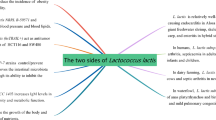Abstract
This paper describes the first report involving two cases of blackleg caused by Clostridium perfringens Type D as a main causative agent with an emphasis on clinical symptoms, the bacteriological and pathological analyses, and molecular detection of the pathogens by PCR method. Two calves of a flock were presented to the veterinary hospital of Shahid Bahonar University of Kerman, Iran. Both calves died suddenly and showed considerable muscle crepitation in the posterior limb. Severe necrosis of thigh muscles in both hind legs, which had caused dark discoloration of tissue with metallic sheen, large amount of thin sanguineous exudates, and numerous gas bubbles in the underlying tissues were evident during necropsy. Histopathological examination revealed extensive degeneration, coagulative necrosis of muscle fibers, severe edema, and small to large cavities due to emphysema between myofibers. Based on these findings, a definitive diagnosis of blackleg was supported. In bacteriological examination, C. perfringens was isolated from muscle and liver samples, which was reconfirmed through morphological and biochemical studies of the isolated strains. Molecular typing of isolated bacteria by multiplex PCR showed that the C. perfringens belongs to Type D of this bacterium. Overall, based on these observations, we propose that the C. perfringens Type D’s toxins are not only able to target the alimentary tract; they can also produce the lesions in other body parts especially in muscles. Whereas the blackleg outbreaks have been commonly reported sporadically in the endemic regions of Iran, identification of C. perfringens Type D, as a main causative agent of blackleg, is a novel finding in veterinary medicine.



Similar content being viewed by others
References
Abd El-Moez SI, Ata NS, Zaki MS (2013) Bacterial causes of sudden death in farm animals. Life Sci J 10(1):1188–1201
Afshari A, Jamshidi A, Razmyar J, Rad M (2015) Genotyping of Clostridium perfringens isolated from broiler meat in northeastern of Iran. Vet Res Forum 6(4):279–284
Aiello S.E, Moses M.A (2016) The Merck Veterinary Manual. 11th ed Wiley
Bagge E, Lewerin SS, Johansson KE (2009) Detection and identification by PCR of Clostridium chauvoei in clinical isolates, bovine faeces and substrates from biogas plant. Acta Vet Scand 51:8
Baums CG, Schotte U, Amtsberg G, Goethe R (2004) Diagnostic multiplex PCR for toxin genotyping of Clostridium perfringens isolates. Vet Microbiol 100:11–16
Casagrandei RA, Pires PS, Otávio R, Silva S, Sonne L, Souza JB, Monique B, Neves S, Rolim VM, Souza SOD, Driemeier D, Carlos F, Lobato F (2015) Histopathological immunohistochemical and biomolecular diagnosis of myocarditis due to Clostridium chauvoei in a bovine. Ciencia Rural 45(8):1472–1475
Falquet L, Calderon-Copete SP, Frey J (2013) Draft genome sequence of the virulent Clostridium chauvoei reference strain JF4335. Genome Announc 1
Farias LD, Azevedo MDS, Trost ME, Côrte FDDL, Irigoyen FL, Vargas ACD (2014) Acute myonecrosis in horse caused by Clostridium novyi Type A. Braz J Microbiol 45(1):221–224
Frey J, Falquet L (2014) Patho-genetics of Clostridium chauvoei. Res in Microbiol 1e9 doi: 10.1016/j.resmic.2014.10.013.
Frey J, Johansson A, Burki S, Vilei EM, Redhead K (2012) Cytotoxin CctA, a major virulence factor of Clostridium chauvoei conferring protective immunity against myonecrosis. Vaccine 30:5500e–5505e
Gacem F, Madadi MA, Khecha N, Bakour R (2015) Study of vaccinal properties of Clostridium chauvoei strains isolated during a blackleg outbreak in cattle in Algeria. Kafkas Univ Vet Fak Derg 21(6):825–829
Halm A, Wagner M, Kofer J, Hein I (2010) Novel real-time PCR assay for simultaneous detection and differentiation of Clostridium chauvoei and Clostridium septicum in clostridial myonecrosis. J of Clin Microbiol 48(4):1093–1098. doi:10.1128/JCM.01975-09
Miyashiro S, Nassar AFC, Souza MCAM, Carvalho JB, Adegas JEB (2007) Identification of Clostridium chauvoei in clinical samples cultures from blackleg cases by means of PCR. Braz J Microbiol 38:491–493
Pilehchian Langroudi R (2015) Isolation, specification, molecular biology assessment and vaccine development of Clostridium in Iran: a review. Int J Enteric Pathog 3(4):e28979
Ribeir MG et al (2012) Myonecrosis by Clostridium septicum in a dog, diagnosed by a new multiplex-PCR. Anaerobe 18(5):504–507
Seise B, Pollok S, Seyboldt CH, Weber K (2013) Dry-reagent-based PCR as a novel tool for the rapid detection of Clostridium spp. J Med Microbiol 62:1588–1591
Song Y, Liu C, Finegold SM (2004) Real-time PCR quantitation of clostridia in feces of autistic children. Appl Environ Microbiol 100:11–16
Tajik J, Khodakaram Tafti A, Derakhshandeh A, Tajik T (2013) Probable occurrence of blackleg in a sucker dairy calf: the necessity of providing sufficient maternal antibody in endemic regions. IJVM 7(1):69–72
Uzal FA, Vidal JE, McClane BA, Gurjar AA (2014) Clostridium perfringens toxins involved in mammalian veterinary diseases. Open Toxinol J 2:24–42
Acknowledgements
This work was supported financially by a grant number MP/342/41 for Scientific Research from Vice Chancellor of Research of the Shahid Bahonar University of Kerman, Iran.
Author information
Authors and Affiliations
Corresponding author
Ethics declarations
Conflict of interest
The authors declare that they have no conflict of interest.
Ethical approval
All applicable international, national, and/or institutional guidelines for the care and use of animals were followed.
Additional information
Javad Tajik deceased on June 2016.
Rights and permissions
About this article
Cite this article
Askari, N., Ghanbarpour, R., Kheirandish, R. et al. Detection of Clostridium perfringens bacterium in the clinical specimens from blackleg calves: a report of two cases. Comp Clin Pathol 26, 255–259 (2017). https://doi.org/10.1007/s00580-016-2386-y
Received:
Accepted:
Published:
Issue Date:
DOI: https://doi.org/10.1007/s00580-016-2386-y




